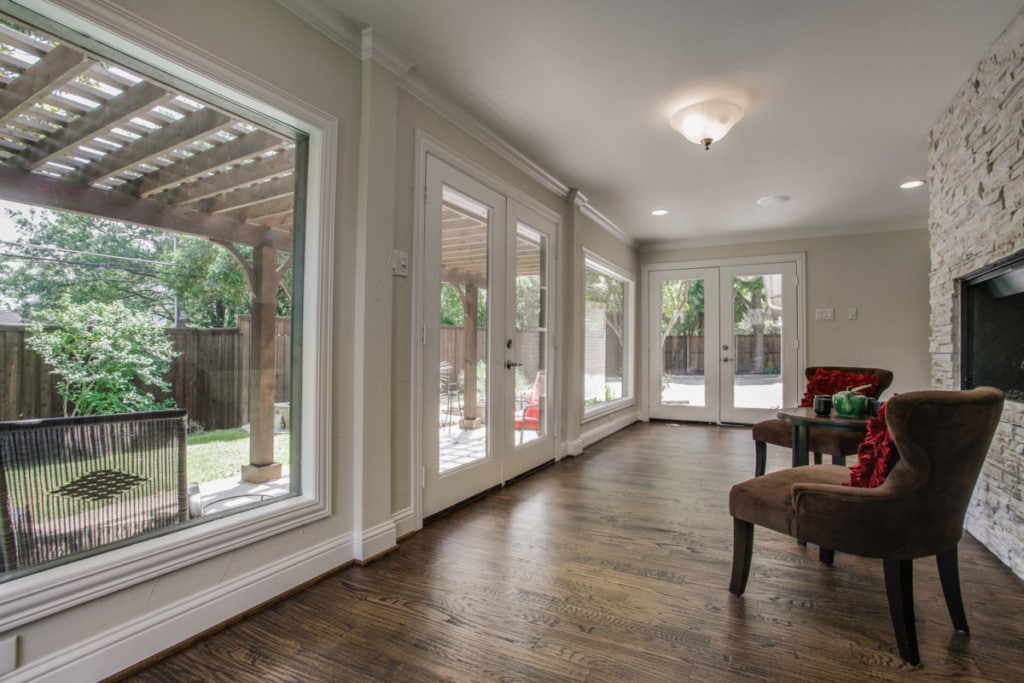You’ve nearly gone through the entire homebuying process. From those early days of using a mortgage calculator to see how much house you could afford, to touring homes online or in-person, and then finally and excitedly making an offer on your first home. Now here you are, the home inspection is complete, your bank’s appraiser has submitted their report, and the bank has given the green light to send settlement funds to the title company. All the stars have aligned, and this transaction looks like it’s on track to close without a hitch. Except there’s just one last thing to do: the final walk-through. And luckily for you, we’ve created the ultimate final walk-through checklist to help ensure a smooth closing.
What occurs during the final walk-through before closing?
The final walk-through is your last chance – before you take ownership of the home – to ensure that:
- All requested repairs are complete
- No new repair or maintenance issues have come up since the inspection
- All of the agreed-upon fixtures and furniture, detailed in the contract, are still in place in the home
- All systems and appliances that the seller indicated to be functioning correctly at the time of the offer are still functioning properly
While this can seem like a lot of items to double-check, you’ll be glad you took the time to do it right. Unfortunately, things can and do happen during the move-out process, while the house sits vacant or because the homeowner or tradesperson failed to complete a repair correctly.

When should the final walk-through take place?
Ideally, the final walk-through should happen as close to closing on the home as possible. The seller’s possessions should be completely moved out, which gives you a better look at the home while it’s vacant, especially for any issues that furniture or appliances might have concealed. If you can’t do your walk-through on the day of closing, you’ll want to aim for no more than 2-3 days ahead of closing.
The last thing you want to do is take possession of your new home, and find out that there’s a problem that emerged since you were last in the house as a prospective buyer, which may have been weeks ago.
Who should be present during the final walk-through?
The buyer and the buyer’s real estate agent are the only people required to attend a final walk-through. The seller should not be present unless the buyer makes a specific request for them to attend, in which case their real estate agent should also be there.
It is also at the buyer’s discretion whether they’d like the home inspector or any of the professionals who made repairs to be present. As the buyer, this may result in an additional charge from the inspector, but if you’re double-checking to ensure work was done correctly, the cost will be worth it.
How long does a final walk-through take?
The time it takes to do the walk-through depends on the house’s size and how thorough you are in your examination. For a 1,200 square-foot house, it might take only 20 minutes to check all the rooms, closets, and cabinets. In a larger house, this process could take an hour or two.
Give yourself an appropriate amount of time to check all of the house systems, storage areas, interior rooms, and exterior features like sprinkler systems, power awnings, etc. No need to rush – you want to be sure there are no surprises when you move in, like a toilet that doesn’t flush or a missing appliance.
What should a buyer bring to the final walk-through?
As a buyer, you should bring:
✓ |
Your original final offer, showing what both parties agreed to in the sale terms |
✓ |
The inspection report – in particular, the summary of necessary repairs |
✓ |
Any written agreements between buyer and seller about the repairs |
✓ |
A notebook to take notes |
✓ |
A phone that takes pictures or a camera to document any new damage or concerns |
✓ |
A small plug-in item like a clock, phone charger, or nightlight to check the outlets |
✓ |
And, of course, this final walk-through checklist of all of the items that should be looked over during this time |
During the final walk-through, you want to ensure that all parties have satisfied the terms of their agreements, and you’re not walking into a repair nightmare now that the home is yours.
What should a buyer look for during a final walk-through?
The main point to keep in mind for your walk-through is that it’s not another home inspection. This is not the time to bring up entirely new items that you or your inspector did not find the first or second time around. This is a cursory inspection to ensure the house reflects the condition you remember when you made the offer.

The ultimate final walk-through checklist
Determine before the final walk-through:
✓ |
Are the agreed-upon repairs complete and to your satisfaction? |
✓ |
Are the agreed-upon repairs complete and to your satisfaction? |
✓ |
Is anything missing from the home that should have been left, such as appliances, window treatments, or even the built-in bookcase? |
✓ |
Have items like garbage, old paint, or anything else been left behind by the seller? |
Home exterior: final walk-through checklist
✓ |
Do the gutters and roof look sound and intact from the ground level? |
✓ |
Did the seller leave behind trash or other items – like yard chemicals, old paint, or cement mix? |
✓ |
Are there any signs of pests— like decayed wood from termites or rodent droppings? |
✓ |
Do the garage doors open correctly? You might receive the remote at the closing, so don’t be alarmed if it’s not at the house. You can always use the garage button inside the garage to run the doors. |
✓ |
Does the doorbell work and is the mailbox in good shape? |
Home interior: final walk-through checklist
✓ |
Make sure the water, electricity, and gas are all on. Run major appliances like the washing machine, clothes dryer, dishwasher, stovetop, and oven – and check to be sure the refrigerator and freezer are running. |
✓ |
Run the heating and cooling (HVAC) system regardless of the temperature outside. |
✓ |
Run the garbage disposal. |
✓ |
Check and run any fans above the stove or in bathrooms. |
✓ |
Check all the faucets in the home by running both hot and cold water. Ensure that sinks drain properly, and pipes and faucets don’t leak. |
✓ |
Flush all the toilets and check for leaks to ensure they work and fill correctly. |
✓ |
Run water in all the showers and bathtubs. |
✓ |
Test the ceiling fans and light switches in every room. |
✓ |
Test any outlets that were repaired to make sure they work. |
✓ |
Look for any new evidence of mold, especially in the corners of rooms and places previously covered by furniture. |
✓ |
Open and close all the doors and windows. Make sure they lock correctly. Are there any missing window screens or sticky doors? |
✓ |
Look at all the ceilings, walls, crown molding, floors, and baseboards. Did the seller make all agreed-to caulking and paint repairs? Any signs of new damage after the seller moved out? |
✓ |
Are all the fixtures intact? Fixtures are items like doorknobs, blinds, lighting, ceiling fans, and built-ins. These items shouldn’t be removed unless their removal was specified in your final contract. And they are considered different from personal property like table lamps that can be easily moved from room to room. |
If everything on this list checks out – congratulations, your home is move-in ready.
What part does the seller play in the final walk-through?
The seller must leave the house in “broom swept” condition, meaning they vacuumed, wiped down the countertops in the kitchen and bathrooms, and swept the floor.
They also must leave behind anything they agreed to in the sales agreement. They can’t decide after the fact that they want to take the window treatments along to their next home. It’s also not acceptable for sellers to leave behind belongings they just don’t want or need anymore, like old clothes, tools and other gear, or just plain junk.
If damage occurred while removing pictures, televisions, or anything else hung or installed, the seller should make these repairs. Sellers should also review the agreed-upon offer to make sure they fixed everything on their list and left behind all the items they agreed to leave.
Mistakes do happen as well as inadequate repairs, especially in the flurry of moving. This is why a final walk-through is so important.
What happens if a problem arises?
Open communication is the key to solving most walk-through problems. First, talk to your real estate agent, who will then speak with the seller’s agent and explain the issue. It’s important to let the real estate agents on both sides serve in their designated roles, and you’ll likely come to an amicable solution.
Most experienced real estate agents will tell you that problems emerging during the final walk-through are rare, but do happen occasionally. If you find a problem that you cannot resolve on the spot, there are three common courses of action:
- You can delay closing until the repairs can be finished or new repairs are completed.
- In some cases, it may make sense to negotiate appropriate compensation and take care of the repairs yourself.
- The least attractive option is to back out of the deal – which no one really wants. You and the seller are both vested in making it successfully to closing, which is why walk-through issues are usually resolved in a reasonable amount of time.
The final walk-through may prompt some anxiety on your part (and also on the part of the seller), but most of the time the final walk-through goes rather smoothly. You’ve traveled almost to the end of your homebuying journey and have earned the right to your excitement. You can now see the house as a blank canvas and start to picture living there, adding your style, and making this house into your next home.
The post The Ultimate Final Walk-Through Checklist Before Closing on a Home appeared first on Redfin | Real Estate Tips for Home Buying, Selling & More.
